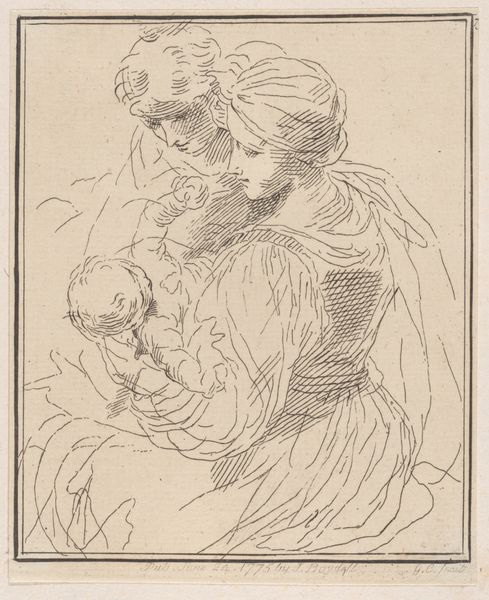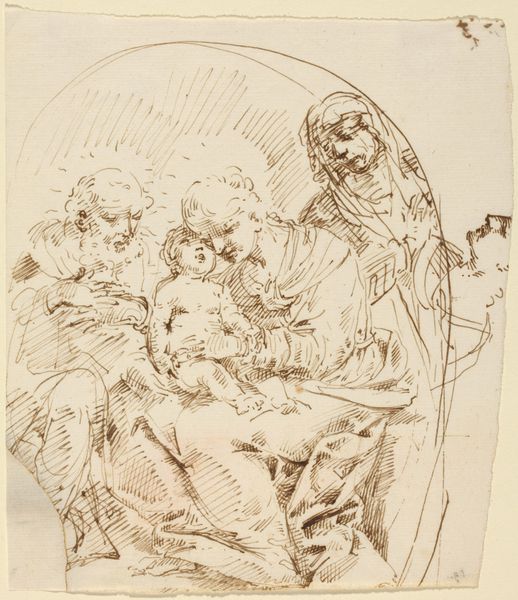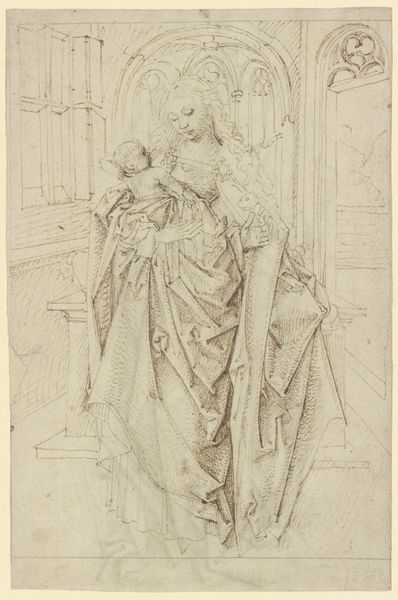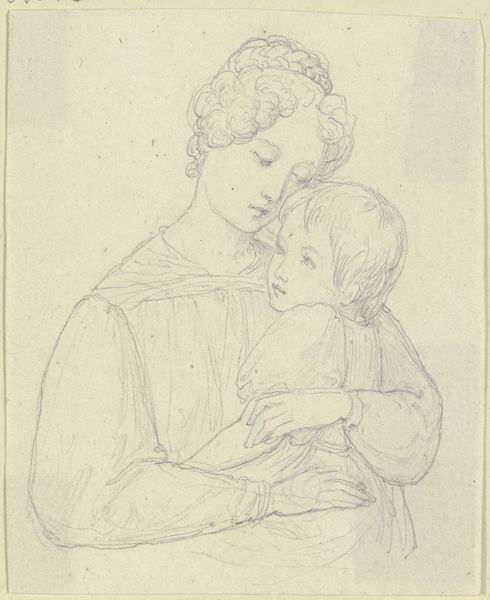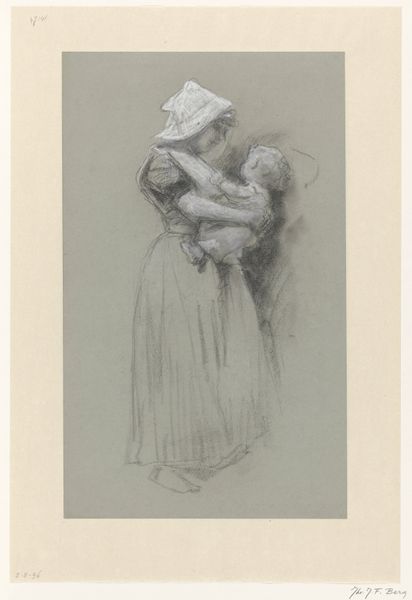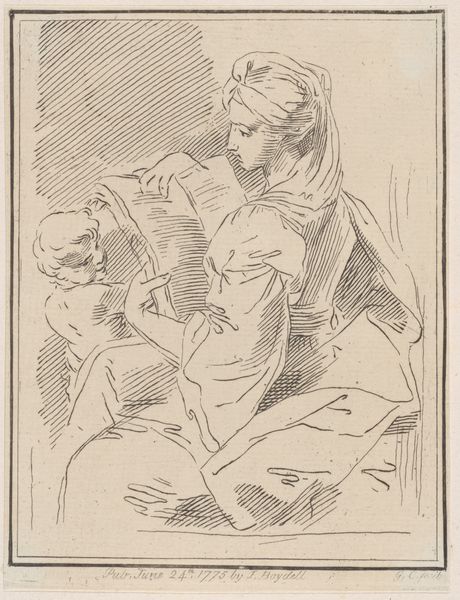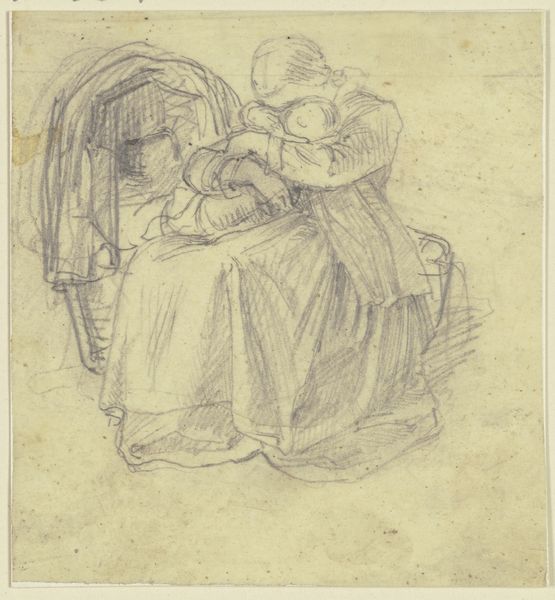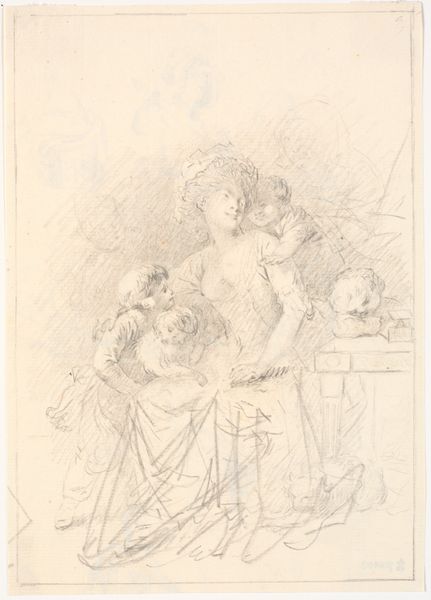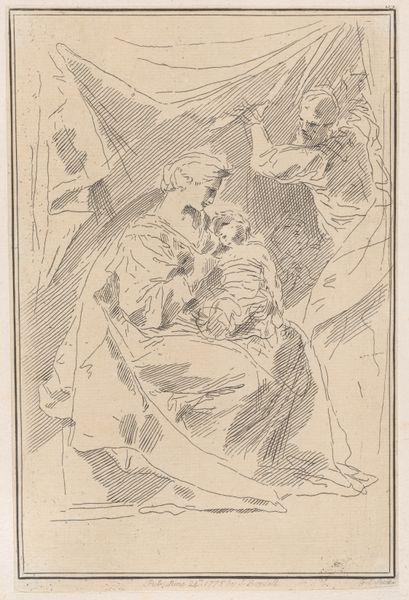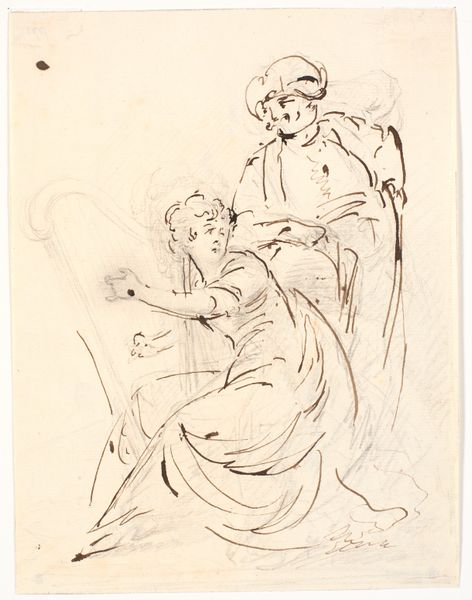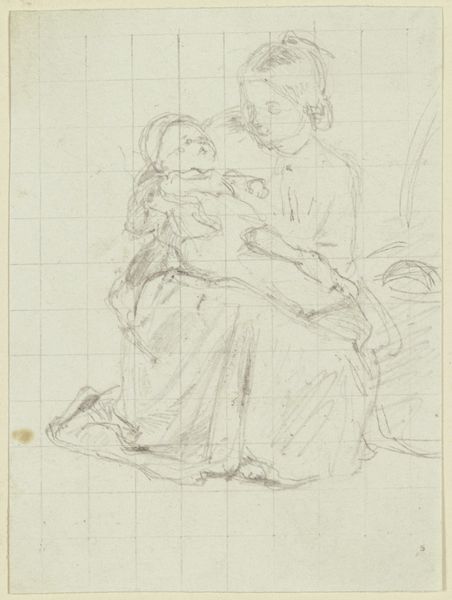
Dimensions: Sheet (Trimmed): 7 7/8 × 5 5/8 in. (20 × 14.3 cm)
Copyright: Public Domain
Curator: Here we have Giuseppe Canale’s engraving, "Madonna and Child with Saint Anne," created in 1775. What strikes you most about this image? Editor: The rawness. The sketch-like quality and bareness really stand out. It feels incredibly immediate, even unfinished, in a way that contrasts starkly with typical Baroque formality. There is an absence of any color or shading that evokes a sense of urgency. Curator: Indeed, that effect might stem from the context of printmaking at the time. Engravings like these were often reproduced and sold, serving a didactic and devotional purpose for wider audiences who perhaps could not afford original paintings. Note how the print’s accessibility reshapes its function in society. Editor: Definitely, that dissemination speaks volumes about access to religious imagery. But I’m also drawn to the intimate gesture: the connection between mother, child, and grandmother. We see a portrayal that normalizes, dare I say, family care and intergenerational wisdom and offers this vision to the masses. Curator: Interesting point. Now consider, this work emerged within the broader Baroque era—an era characterized by opulence and religious grandstanding—this piece seems to reject excess for more austere introspection. Editor: Right. What is striking is its unadorned quality, allowing the viewer to focus on familial relationships. While religion often elevates the mother of Christ as a saint, here she also embodies maternal duty—a model for women in that period and one that continues in different iterations now. What is lost or reinforced through this transition in devotional presentation? Curator: Perhaps by humanizing the holy family in print, artists made it more accessible, literally and figuratively, to the common person. It served political purposes, making the idea of a righteous family even more widespread across social groups. Editor: Thank you. Looking at this again, it is interesting how such a simple medium like a bare engraving, can suggest powerful intersectional perspectives when thoughtfully interpreted through theory. Curator: Absolutely, seeing it in that light encourages me to consider more carefully the implications of Canale's choices.
Comments
No comments
Be the first to comment and join the conversation on the ultimate creative platform.
